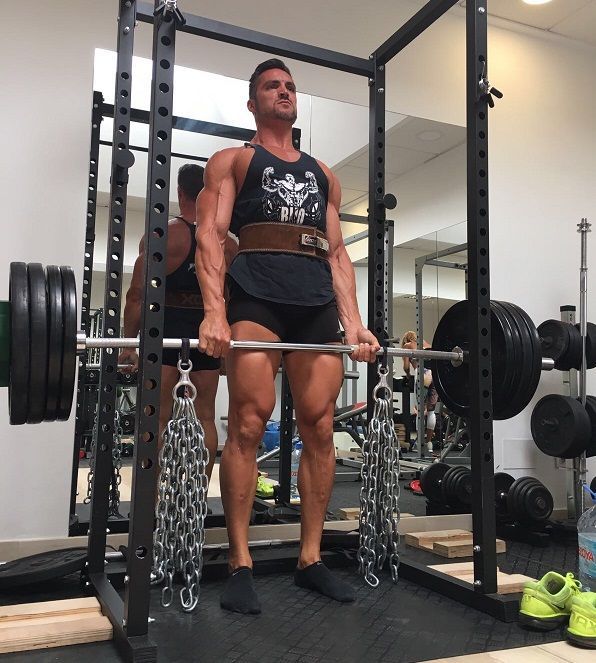
Hypochondriac diet and muscle mass
In the process of weight loss / determination (without medication), there are several factors that affect the maintenance of skeletal muscle and, in addition, prevent or mitigate a decrease in basal metabolism:
- Initial Muscle Mass
- Calorie restriction level (deficit) and calorie balance
- Macronutrient Ratio and Protein Intake
- Possible exercise and type of exercise
Initial Fat Mass Level
Fat mass is a protective factor for muscle mass, as established by Forbes theory (1). For example, obese people not only have larger basal muscles than normal weight people, but they are also less susceptible to muscle catabolism during weight loss. The more “fat” you have, the less protein you use for energy purposes and vice versa (2), and therefore lean body mass is better protected in the event of radical dietary strategies. As I explained in another article on body rebuilding, this may be one of the reasons why obese people can get body rebuilding much easier than thin people. In this sense, it would be better to apply a more pronounced deficiency or reduce the amount of carbohydrates in the initial or intermediate stages of the weight loss process, when the fat mass does not reach too low levels (> 10% for men or> 18% for women).
Calorie restriction (deficit) level and calorie balance

Generally speaking, the more pronounced the calorie restriction (or the more negative the energy balance), the more muscle mass is catabolized (3). For this reason, too negative a caloric balance, if maintained chronically, will be detrimental to maintaining muscle mass. In the past, some articles have suggested a deficit of 1000 kcal / day may be the maximum “safe” limit to avoid a decrease in basal metabolic rate (associated with maintaining lean body mass). ) (4). However, these values are very approximate and should be interpreted with caution, because they depend on the time during which they are maintained, the level of fat mass (discussed above) and the ratio of macronutrients (proteins and carbohydrates) -catabolic, especially in the later stages) (5) .
In this case, it is necessary to clearly distinguish between a strong acute restriction of calorie intake (1 or 2 days, as with some intermittent fasting) from the same strong restriction maintained by the chronic route. The first strategy is much less risky and may even be more bearable. In fact, some of the patterns of intermittent fasting may allow better maintenance of lean body mass during calorie restriction. although specific days of severe calorie restriction with a deficit of more than 1000 kcal are expected (6).
Macronutrient Ratio and Protein Intake
Macronutrient ratios are important, not just total calories consumed; that is, it is not only “calories” that are important for maintaining muscle mass, regardless of their origin (for fat mass, they are not the same thing, as I explained in the article “Burning fat does not mean losing weight”). Protein plays a key role in this process (3) and it has already been found that for the natural low-fat bodybuilder, the optimal hyperprotein range during a low-calorie diet is between 2.3 and 3.1 g / kg lean muscle mass, depending on the amount calorie restriction (7), which can range from 2.2 to 3 g / kg body weight.
It is important to remember that more severe caloric restriction with adequate protein levels may be more anti-catabolic than more moderate restriction but with insufficient protein. Thus, a calorie deficit is not the only determining factor. The protein process follows a “fat-to-carbohydrate ratio” that can also vary depending on the level of fat mass. If the mass of fat is not too low, a low carbohydrate (LCHF) diet can be as effective as a high carbohydrate low fat (HCLF) diet; while with very low body fat (
Possible exercise and type of exercise

During calorie restriction, physical activity can have a positive or negative effect on maintaining lean body mass, depending on the nature of the activity itself and the overall context. Firstly, exercise affects negative energy balance; that is, it helps create (or increase) a caloric deficit: as stated earlier, the larger the deficit, the higher the risk of catabolism. If the additional energy deficit created by exercise is not compensated by an increase in intake, too intense physical activity (more aerobic than strength training) significantly increases this risk.
But in addition to the effects of exercise on overall energy balance, aerobic and anaerobic exercise have different effects on maintaining muscle mass. Aerobic exercise does not maintain muscle mass on a low-calorie diet (8); while strength training has the effect of saving muscle / muscle mass (9,10), and in some cases may even increase it (5) and therefore can lead to body restructuring. Excessive aerobic activity combined with resistance exercise (also on selected days) can interfere with muscle maintenance; but it all depends on how much and how they are practiced (11).
